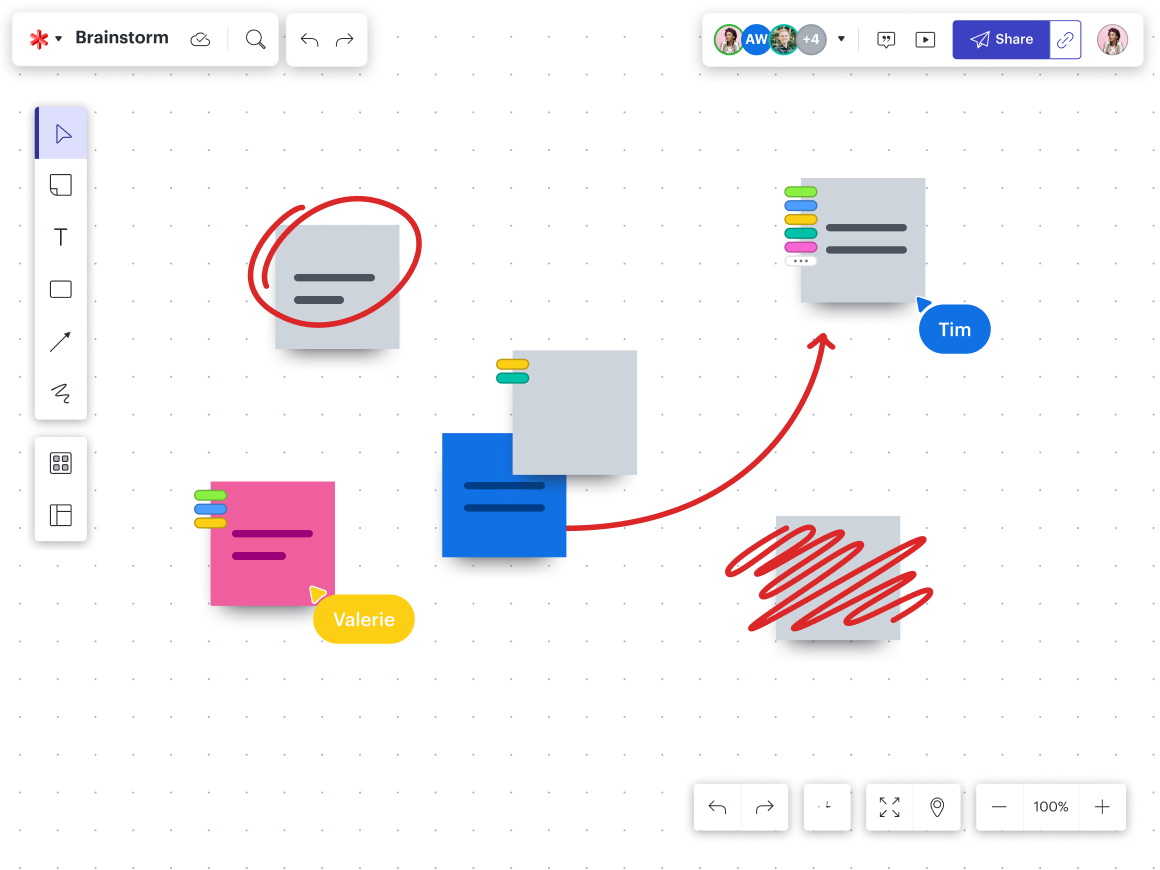
How fostering creativity in the workplace drives productivity
Nathan Rawlins
Reading time: about 5 min
Topics:
Productivity and creativity are often seen as opposing forces. Creativity is framed as organic, unpredictable, and hard to quantify. Productivity, on the other hand, is perceived as structured, planned, and tied to performance metrics.
However, by facilitating and embracing creativity, businesses can actually increase meaningful productivity across their teams. The reason for this increase is that purpose is a deep and effective motivator for people, regardless of their background. It’s a universal driving force.
Essentially, creativity is the spark that lights company missions, and it's these missions that inspire employees. People aren’t deeply motivated by deadlines and quotas; those are surface-level motivators. Research from Mckinsey shows that 82% of employees say that their organization’s purpose is crucial, and 70% say their work defines their sense of purpose.
Let’s dive into some of the ways leaders can encourage creativity in the workplace to spark motivation and drive productivity.
3 key elements to fostering creativity in the workplace
Embracing creative thinking in business unlocks a wealth of possibilities, driving teams to generate groundbreaking ideas and align their efforts with purpose, ultimately leading to heightened productivity levels. While many organizations might accept this equation, they may struggle to implement it. How do you foster creativity in the workplace? Here are three ways leaders can bring additional creativity to their workflows:
1. Vision
It’s critical that business leaders facilitate and encourage creative, innovative thinking, but ideation without vision can be frustrating. Leaders are responsible for communicating their vision and helping team members understand how the work they do helps accomplish a common objective.
In essence, creative thinking needs an anchoring vision to fuel and guide productivity. People aren’t motivated by project management software, endless meetings, and directionless tasks. Team members are driven by common goals, collaboration, and visualization.
Plus, without a creative vision and purpose, checklists, action plans, and roadmaps typically associated with productivity are meaningless.
2. Experimentation
While some leaders might view experimentation as the antithesis to productivity, that’s not always the case. In fact, the nature of creativity embraces the potential for failure that accompanies experimentation.
Creative exploration is crucial for team members to test out new ideas, learn from their experiments, and feel supported in an environment that encourages innovation. When team leaders foster a space for teams to identify those cutting-edge solutions and new ideas that’ll move the business forward, productivity can drastically increase.
Visual collaboration platforms can help create this ideal environment. When compared to static documentation, visuals (such as diagrams, flowcharts, mindmaps, etc.) encourage a space for experimentation and learning since it’s a much more dynamic format. Collaborative AI is another tool you can use in a visual collaboration platform to help spark creativity and foster diverse ideas.
3. Structure
That’s not to say that there aren’t any risks involved with experimentation, but there are ways to structure creativity to mitigate potential risks and maintain momentum toward overall objectives. For example, leaders can facilitate specific events geared toward unleashing creativity, such as hackathons or mind mapping sessions. These types of events inspire creative thinking but provide helpful time boundaries.
When brainstorming sessions leave teams feeling overwhelmed with ideas, it can be a good sign that it’s time to implement some creative structure. Without the ability to synthesize ideas and turn them into action plans, even the most creative ideas can lie dormant and clutter up workflows. One way to add additional structure to creativity and experimentation is to use a prioritization matrix. With this kind of framework, teams can determine which ideas need to be turned into action plans first.

When we invest in creativity, the returns are the big ideas that power innovation and engagement across our teams. Some of the biggest, most profitable ideas emerge from creative exploration.

How implementing effective collaboration tools increase creativity
This Forrester study uncovers how great collaboration tools facilitate creativity, innovation, and productivity in hybrid and remote workplaces.
Read moreCreativity and productivity during remote work
The shift to remote work has negatively impacted people’s access to creative collaboration and, ultimately, productivity. According to Lucid’s first-party research, 22% of remote workers surveyed noted that working from home has hurt their creativity and one in four managers agree.
The reason? Isolation. It can be difficult for distributed teams to tap into the creative energy of in-person ideation sessions. This was the case for 46% of survey respondents who cited less face time with their team as the main reason their creativity was lagging.

Beyond the isolation of remote work, creativity is hampered by technological limitations. 40% of those surveyed said that it was just too difficult to collaborate over a call or video conference. When we asked the managers in our sample about remote work and creativity, nearly one in four blamed the decline in creativity on the lack of visual brainstorming sessions and 42% pointed to in-office scenarios, like conference rooms with whiteboards and access to causal gathering spots, as major contributors to past creative success.
So how can organizations encourage creativity in today’s remote work environment? Here are three ideas:
- Schedule opportunities for creative thinking. Creative thinking can often be overlooked if it doesn’t get time on our calendars. There will always be more meetings and tasks to check off our lists, so it’s important to actually book time for creative activities.
For example, our annual hackathons have led to major updates for our product offerings. Teams spend two to three days completely immersed in creative thinking, collaborative innovation, and playing with out-of-the-box ideas. The results are fantastic features that bring value to both the product and the company. Additionally, these events boost morale and demonstrate our commitment to creativity and innovation.
- Recognize creativity when giving feedback. While performance reviews often focus mainly on productivity, consider incorporating creativity. Give employees the opportunity to share their experiences with creative thinking and make sure they know that you value creativity even if an idea failed. Take time during one-on-one meetings and performance reviews to discuss creative efforts. Reward those initiatives with encouragement and recognition of how creative thinking contributes to the success of your company.
- Provide resources for real-time collaboration. There is a clear need for solutions that augment video conferencing platforms, such as visual collaboration, to enhance collaboration and connection across remote teams. Visual collaboration platforms should not only replicate the in-office experience of working together on a whiteboard, but they should also enhance it. Collaborative visual brainstorming is a key creative process. Bring your teams together over a shared canvas where they can ideate and innovate together.

Foster creative thinking and innovation on your teams with Lucid
Lucid’s visual collaboration platform allows you to document innovative ideas and action plans in a central location.
Learn howAbout the author

Nathan Rawlins joined Lucid as Chief Marketing Officer in 2017 with 20+ years of experience overseeing sales and marketing efforts across a variety of technology companies.
About Lucid
Lucid Software is the leader in visual collaboration and work acceleration, helping teams see and build the future by turning ideas into reality. Its products include the Lucid Visual Collaboration Suite (Lucidchart and Lucidspark) and airfocus. The Lucid Visual Collaboration Suite, combined with powerful accelerators for business agility, cloud, and process transformation, empowers organizations to streamline work, foster alignment, and drive business transformation at scale. airfocus, an AI-powered product management and roadmapping platform, extends these capabilities by helping teams prioritize work, define product strategy, and align execution with business goals. The most used work acceleration platform by the Fortune 500, Lucid's solutions are trusted by more than 100 million users across enterprises worldwide, including Google, GE, and NBC Universal. Lucid partners with leaders such as Google, Atlassian, and Microsoft, and has received numerous awards for its products, growth, and workplace culture.
